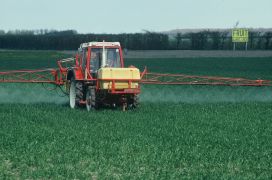Differences
This shows you the differences between two versions of the page.
| Both sides previous revisionPrevious revisionNext revision | Previous revision | ||
| capri:concept:supply [2021/06/08 10:03] – Change to DokuWIki matsz | capri:concept:supply [2023/06/05 10:52] (current) – [Model calibration and simulation response] gocht | ||
|---|---|---|---|
| Line 19: | Line 19: | ||
| The simulation response of the models depends on the interplay of the contraints and the objective function. Given the relatively small number of contraints directly impacting on the allocation of the production activities, the simulation response is too a large extent depending on the parametrization of the quadratic terms of the cost function. | The simulation response of the models depends on the interplay of the contraints and the objective function. Given the relatively small number of contraints directly impacting on the allocation of the production activities, the simulation response is too a large extent depending on the parametrization of the quadratic terms of the cost function. | ||
| - | The slope terms of the cost function are either estimated from time series analysis ([[http://hss.ulb.uni-bonn.de/ | + | The slope terms of the cost function are either estimated from time series analysis ([[https://bonndoc.ulb.uni-bonn.de/ |
| ==== Environmental indicators and restrictions ==== | ==== Environmental indicators and restrictions ==== | ||
Except where otherwise noted, content on this wiki is licensed under the following license: CC Attribution-Share Alike 4.0 International


